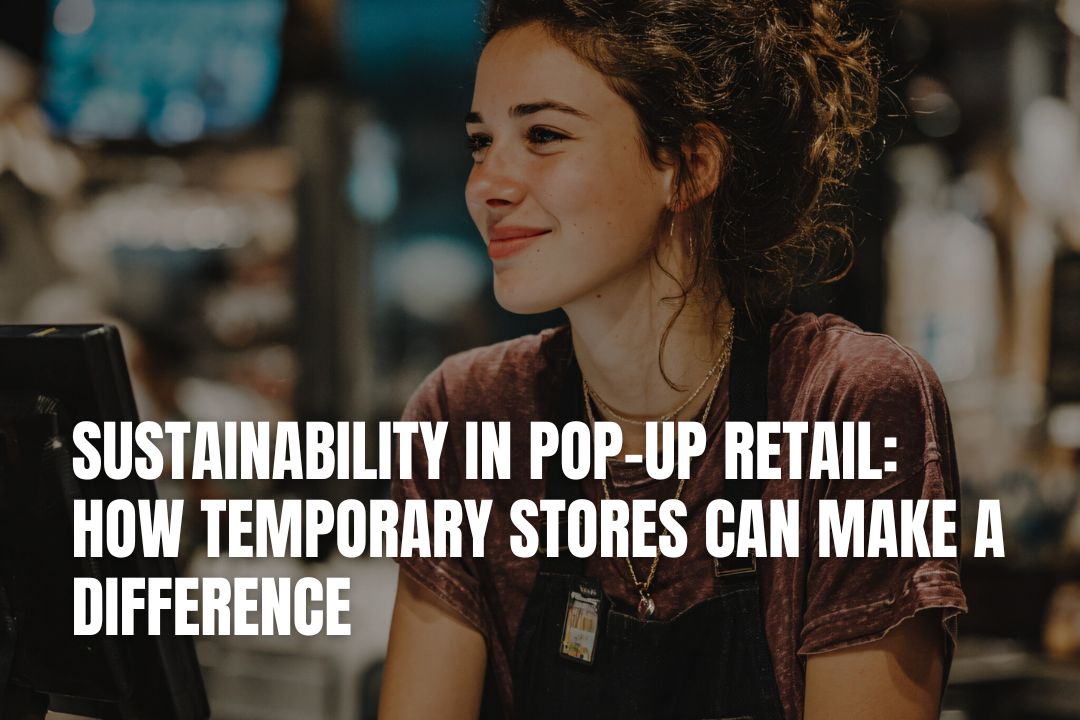
Pop-up retail has become an innovative way for brands to engage customers, test markets, and create unique experiences. While temporary stores are often associated with fast setup and quick turnover, they also present opportunities to implement sustainable practices that reduce environmental impact and support long-term business responsibility.

The materials used in pop-up retail spaces can significantly influence their environmental footprint. Lightweight, reusable fixtures, modular displays, and recyclable signage reduce waste and allow for multiple deployments. Wood sourced from certified sustainable forests, metal frames that can be reused across locations, and eco-friendly paints or finishes contribute to a smaller environmental impact. Brands that plan for modular construction can reuse these materials for future pop-ups.
Temporary retail locations often require lighting, climate control, and digital equipment. Using energy-efficient LED lighting, motion sensors, and programmable thermostats can reduce energy consumption substantially. Solar-powered displays or portable battery systems are becoming practical solutions for outdoor or short-term setups. Water conservation measures, including low-flow sinks or reusable containers for demonstration purposes, also help limit the overall resource use.
Pop-up retail generates packaging, promotional materials, and single-use items for both customers and staff. Reducing disposable materials, offering reusable shopping bags, and providing clear recycling options encourage sustainable practices among visitors. Planning inventory carefully prevents excess stock that could otherwise become waste, and choosing suppliers that prioritize minimal or recyclable packaging supports a circular approach. Brands can also partner with local organizations to donate surplus goods, keeping items in use rather than sending them to landfills.
Mobile pop-up stores, including mobile concepts like a mobile dentist truck, rely on transportation to reach different locations. Optimizing route planning, consolidating shipments, and using vehicles with lower emissions can reduce the carbon footprint associated with travel. Additionally, choosing local suppliers for products and materials decreases transport distances and energy use, creating a more sustainable supply chain for temporary operations.
Pop-up retail provides an excellent opportunity to educate customers about sustainable practices. Signage explaining eco-friendly materials, energy-saving initiatives, or responsible sourcing can enhance brand reputation and encourage consumer behavior that aligns with environmental goals. Interactive elements, such as product return programs, give visitors tangible ways to participate in sustainability. These efforts reinforce a message that temporary stores can have a positive impact beyond sales.
Sustainable pop-up retail benefits brands in multiple ways. Reducing resource use and waste lowers operational costs, improves compliance with environmental regulations, and strengthens relationships with eco-conscious customers. Temporary stores serve as testbeds for sustainable initiatives that can later be applied to permanent locations or broader operations, demonstrating that responsibility and creativity can work hand in hand.
Temporary does not mean wasteful. Thoughtful design, energy efficiency, waste reduction, and customer engagement can make pop-up retail both innovative and sustainable. Brands that incorporate these practices show that even short-term experiences can contribute to a long-term positive environmental impact. For more information, look over the accompanying resource below.

For a sustainable pop-up, you should prioritise materials that are reusable, lightweight, and responsibly sourced. Think about modular displays you can use again, fixtures made from certified sustainable wood, and recyclable signage. Using eco-friendly paints and finishes also helps reduce your environmental impact.
You can make your temporary space energy-efficient by using LED lighting, which consumes far less power than traditional bulbs. Installing motion sensors for lights and using programmable thermostats for climate control also cuts down on unnecessary energy use. For some setups, portable solar power systems are a great choice.
While it might seem that way, a pop-up doesn't have to be wasteful. With thoughtful planning, you can create a very sustainable experience. By focusing on reusable construction, managing waste properly, conserving energy, and optimising logistics, your temporary store can have a positive long-term impact.
Engage your customers directly by being transparent about your efforts. Use signage to explain the sustainable materials you've used or your energy-saving measures. You can also offer reusable shopping bags or create interactive elements like a take-back program for old products to give them a tangible way to participate.
Absolutely. Beyond the environmental benefits, a sustainable approach can lower your operational costs through reduced energy and material use. It also strengthens your brand's reputation, helps you connect with eco-conscious shoppers, and can improve your compliance with environmental regulations.